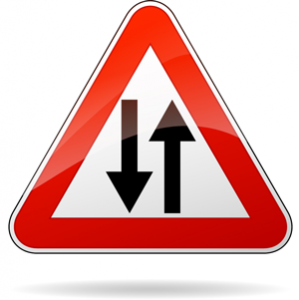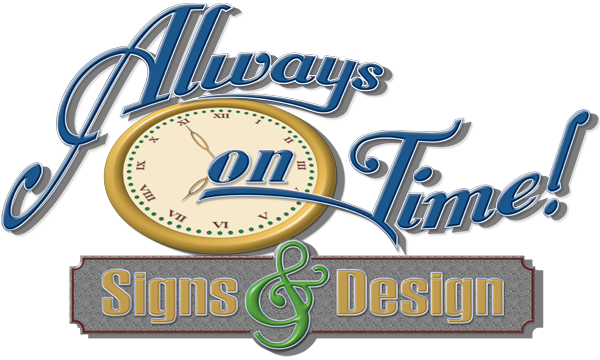Two-Way Traffic Sign For Sale

Typically, roads are designed to allow traffic to flow in opposite directions with one or more lanes on each side. However, sometimes roads will change from a one-way to a two-way thoroughfare. When this happens, there needs to be a two-way traffic sign. The purpose of this sign is to warn drivers that they will encounter oncoming traffic and to prepare accordingly.
In many cases, this sign is placed as a temporary warning during construction or renovation projects. For example, if one side of a divided roadway is closed for repairs and cars are directed to the other side.
Why are Two-Way Traffic Signs Important?
If drivers are unaware that they can encounter oncoming traffic, they may act recklessly or put themselves in unnecessary danger. As we mentioned, these signs are often placed at construction sites. So, drivers may be used to moving on a one-way road, only to discover that it’s been turned into a two-way street.
According to data, head-on collisions only account for about two percent of all traffic incidents. However, despite such a low number, these collisions generate up to 10 percent of all traffic fatalities.
These statistics illustrate the value of placing these types of signs on roadways. Since head-on collisions can be so deadly, cities and construction crews have to be extra cautious when placing two-way traffic signs. Otherwise, collision deaths could increase significantly in the affected areas.
Types of Two-Way Traffic Signs For Sale
The most common two-way traffic sign is a diamond shape with an orange background and black graphic elements. The sign shows two opposing arrows, with one pointing up and the other pointing down. There are a few variations of this sign, including:
- Some two-way traffic signs use a bright yellow background instead of orange. Yellow has better visibility, particularly in low-light conditions.
- The sign might be rectangular instead of a diamond shape to avoid confusion with other diamond-shaped signs (i.e., yield).
- If a highway divider splits the two-way traffic, the sign can illustrate this obstacle. This variation is valuable because it can help prevent incidents where drivers accidentally drive onto the median.
- Finally, some two-way traffic signs use words instead of graphics. The words say, “Two-Way Traffic Ahead,” and sometimes, the sign may say “Caution” above the text. This variation can be yellow and diamond-shaped or white and rectangular.
In addition to the different appearance of these signs, you can choose between multiple materials, such as:
- Hi-Intensity Reflective Aluminum – We recommend this option if signs are posted in low-light conditions. These signs also last much longer and require less maintenance and upkeep.
Where to Place Two-Way Traffic Signs
According to the Manual on Uniform Traffic Code Devices (MUTCD), two-way traffic signs should be placed at the beginning of the transition from a one-way road to a two-way. The manual also states that this sign is only used when a divided highway has one side shut down and two-way traffic on the other side. However, if cities or construction sites have use for this kind of sign elsewhere, they should still follow the MUTCD’s recommendations.
If the two-way traffic area continues for a while, more signs should be placed along the route to remind drivers that it’s not okay to treat the road as a one-way thoroughfare.
Why WorkSafe TCI?
Traffic safety is always a priority, so you need to ensure you get the best results for your needs. WorkSafe TCI has been in this industry for a long time, and we deliver superb results. We also offer rush orders and fast turnaround times if necessary. For example, if you need additional signage for an extra-long stretch of a temporary two-way traffic corridor.
We also ensure that all our signs are MUTCD compliant so that you never have to worry about getting hit with fines or citations from inspectors. Contact us today to find out more and order your signs!

